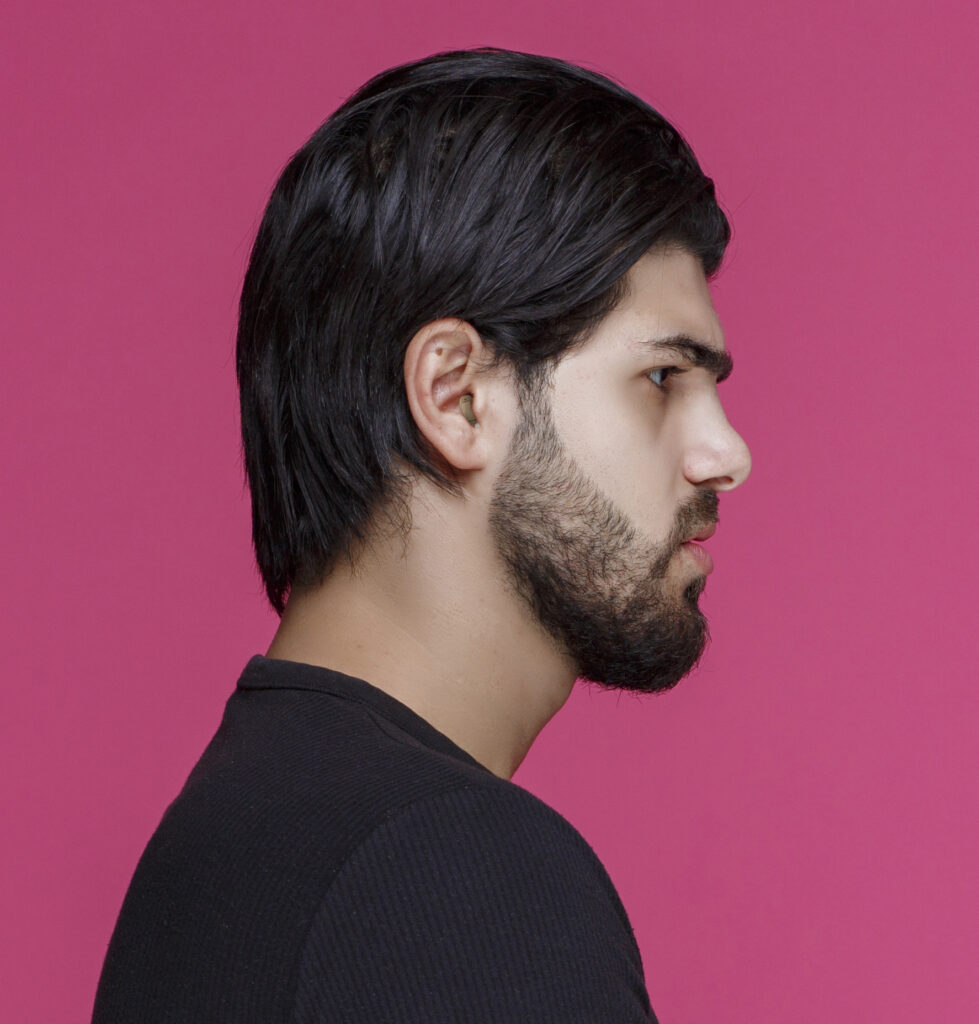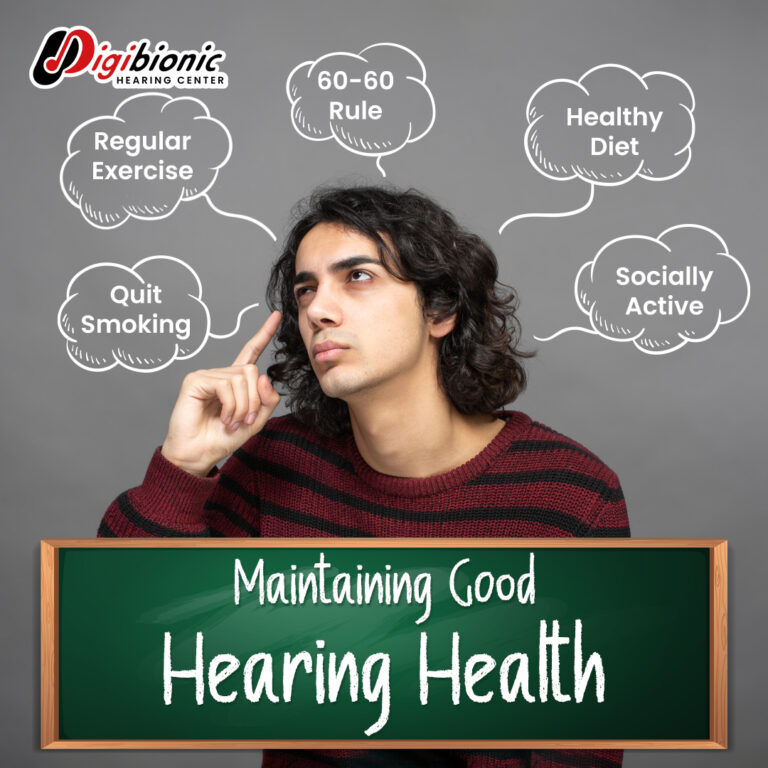Can I wear just one hearing aid? Should hearing aids be worn in one ear or both?
- April 01, 2024
- Written by Digibionic India

- Can I wear just one hearing aid?
- Based on current clinical experience, if only one hearing aid is to be worn, it is recommended to be worn on the better ear.
- How about pairing one the worse ear?
- In the same budget, pairing hearing aids for both ears is better than putting all budget on only single hearing aid.
- Conclusion:
Can I wear just one hearing aid?

The answer is: yes, you can.
However, wearing only one hearing aid is “conditionally acceptable” and may not be suitable for everyone. Now let’s analyze the relevant content about wearing only one hearing aid.
Firstly, there is a type of people with unilateral hearing loss who can definitely wear just one hearing aid! Unilateral hearing loss means that hearing loss is only present in one ear, while the other ear has normal hearing or is completely deaf. For these individuals, the hearing aid can only benefit the ear with hearing loss, so wearing only one hearing aid is completely fine.
Additionally, in recent years, society has increasingly recognized the challenges faced by individuals with unilateral hearing loss, making it common for them to wear just one hearing aid.
Furthermore, some individuals with unilateral hearing loss may consider using a “binaural transmission mode (cross transmission)” to wear hearing aids in both ears to enhance the effectiveness of listening
What about bilateral hearing-impaired individuals? Can they wear just one hearing aid? Generally, bilateral hearing-impaired individuals can fall into several categories:
<First Type> Both ears have hearing loss, but one ear has milder impairment (better ear), and the other ear has more severe impairment (worse ear).


▲Example of type 1 audiogram
Based on current clinical experience, if only one hearing aid is to be worn, it is recommended to be worn on the better ear.
This is because the better ear generally has superior functionality compared to the worse ear, resulting in better outcomes when using a hearing aid. Additionally, consistent daily wear of the hearing aid for at least 8 hours can effectively stimulate the auditory nerve, potentially slowing down the deterioration of the better ear. However, this method of wearing also requires caution as it may lead to a greater discrepancy in hearing between the better and worse ears, potentially exacerbating the imbalance in bilateral hearing.
How about pairing one the worse ear?
It’s okay, but generally not recommended. This is because the functionality of the worse ear is already poorer compared to the better ear, resulting in significantly inferior outcomes when using a hearing aid. In actual clinical experiences with fitting hearing aids, many patients express sentiments like, ” My hearing problem is only on the worse side (worse ear), so if you’re an expert, you should let me wear the hearing aid on this side (worse ear) and enable me to hear like normal people.
Why should I wear it on the better side (better ear)” While every audiologist wishes to accommodate such requests, the effectiveness of hearing aid use is closely tied to the individual’s physiological conditions. While wearing a hearing aid on the worse ear will certainly improve hearing compared to not wearing one at all, the overall effectiveness of wearing a hearing aid on the better ear far exceeds that of wearing it on the worse ear in real-life situations
<Second Type> Both ears have similar degrees of hearing loss.
Due to the similar degree of hearing loss in both ears, if considering wearing only one hearing aid, it is advisable to undergo a trial of hearing aids and evaluate which ear to wear based on the trial results, aiming for the ear with better effectiveness. However, wearing only one hearing aid poses risks, including potential rapid deterioration of the unaided ear, difficulty distinguishing the direction of vehicles or other dangerous sources, and others needing to speak to the wearer on the side of the aided ear for better communication. Therefore, we strongly discourage bilateral hearing-impaired individuals from wearing only one hearing aid.
In the same budget, pairing hearing aids for both ears is better than putting all budget on only single hearing aid.
By doing so, not only do we mitigate the risk of rapid deterioration, but we also enable both ears to effectively hear. In mathematics, 1 + 1 equals 2, but when it comes to wearing hearing aids, the combination of two hearing aids yields benefits greater than 2. It helps to slow down hearing deterioration, facilitates effective communication, aids in promptly identifying traffic and danger, and so forth. All of these factors underscore the importance of wearing hearing aids in both ears.
Conclusion:
Wearing hearing aids can effectively alleviate the challenges of hearing loss, and whether wearing aids in both ears or just one ear greatly impacts effectiveness. Generally:
Wearing hearing aids in both ears >>> Wearing in the better ear >>> Wearing in the worse ear >>> Not wearing at all
| Wearing a single-side hearing aid | Wearing bilateral hearing aids | |
| Unilateral hearing loss | Excellent | In special case, you need cross hearing aids |
| Wearing in the better ear | Great | Excellent |
| Wearing in the worse ear | It’s okay | Excellent |
| Both ears have similar levels of hearing loss | Good | Excellent |
However, the actual circumstances of each case are much more complex than theory suggests. The most accurate approach is to go through steps such as practical on-site hearing tests, assessments of lifestyle and work environments, and consideration of user habits to find the most suitable recommendations for individuals with hearing loss.
Digibionic Hearing Center is equipped with advanced hearing testing instruments. You can schedule a free hearing test and various assessments at our store, where our on-site audiologists can provide you with the most customized recommendations. This ensures peace of mind during the selection process and after-sales service. Book a free hearing test now and improve your hearing issues!
Recommended Articles
Why Noise Cancellation is Important in Hearing Aids?
Early Action & Daily Habits for Better Hearing Health
Selection Guide for the Best Hearing Aids for Your Parents
25 February, 2025 Written by Digibionic India As our parents age, maintaining their quality of…








